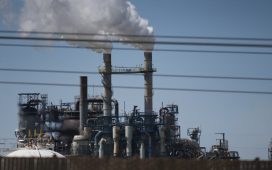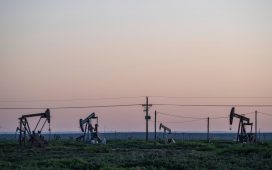Since taking office in January 2017, the Trump administration has endeavored to roll back burdensome regulations to unleash the economic power of the U.S. oil and gas industry. The administration’s best efforts, however, have often been turned back by the courts where environmental groups have won a string of victories.
Repealing the previous administration’s punishing environmental regulations, proposed late in the President Obama’s second term, was never going to be easy due to environmentalists’ strategy of litigate first and ask questions later – a strategy aimed at delaying regulatory reforms until Trump leaves office.
That’s been the case with the Obama-era Environmental Protection Agency’s methane emission rules on the natural gas sector – harsh regulations the White House and industry say are hampering domestic production.
Carbon dioxide gets most of the headlines, but methane emissions are one of the most damaging greenhouse gases in terms of their effect on climate change. The concern is that the energy industry leaks too much methane from its operations – at well-sites, pipelines, valves, connectors, gathering facilities and terminals.
But the industry has been working hard – and making impressive progress – to improve its environmental performance on methane emissions, even as the courts review Trump’s regulatory repeal efforts. At the same time, the industry continues to keep the United States number one in both oil and natural gas production in the process – a feat that continues to contribute to the America’s economic growth.
The Environmental Partnership, a voluntary initiative of America’s natural gas and oil producers, recently released its first annual report highlighting the progress being made in reducing methane emissions.
The partnership has grown from about 20 participating companies at its launch in 2017 to 65 companies, representing 80 percent of the top U.S. gas producers. The coalition takes a collaborative “best practices” approach, and the results of this effort have been nothing short of stunning.
In the Permian Basin of West Texas and New Mexico, the heart of the shale boom, energy production increased 100 percent from 2011 to 2017, while methane emissions relative to production fell nearly 40 percent. In the Eagle Ford Basin, production grew 130 percent during the same time period, while methane emissions relative to production fell nearly 70 percent.
In the Appalachia basin, which extends all the way from Alabama to Maine and includes the giant Marcellus shale gas formation, methane emissions are down 70 percent. Gas production, on the other hand, have increased 384 percent.
It’s no secret that environmental groups and many Democrats, including a growing list of 2020 presidential candidates, want to do away with fracking and the shale oil and gas boom altogether, no matter how important it’s been to the economy.
But all sides, including the “Keep It In The Ground” tribe, should consider what the industry is accomplishing on methane emissions without federal regulation.
The data shows that the industry is making real environmental progress, innovating and advancing new technologies to further reduce its carbon and methane footprint, and protect the environment.
All told, that commitment has helped ensure that methane emissions from natural gas operations have declined by 14 percent since 1990 – even as natural gas production has increased more than 50 percent over that same period.
This is no small smattering of data either. It includes information from 78,000 sites and 56 million components from all participating companies in 2018.
The EPA itself has estimated that finding and fixing leaks at well-sites and pipelines can achieve a 40 percent methane emission reduction. The good news is that the reporting data from the Environmental Partnership shows a very low leak occurrence rate – just 0.16 percent of components surveyed. That is considerably lower than the 1.4 percent estimate used by the Obama-era EPA in the development of New Source Performance Standards.
What all sides should realize is that the industry has a financial incentive to reduce methane emissions without regulations. Methane emissions are essentially leakage of natural gas. Every molecule lost is a potential dollar removed from a company’s bottom line.
Everyone, including climate change activists, should also realize that the natural gas boom is the main reason why greenhouse gas emissions are near 25-year lows. The displacement of coal with abundant, affordable and cleaner-burning natural gas in the electricity sector has been the key driver of the reductions.
Is there more work to be done? Absolutely. There is far too much flaring of natural gas in the shale basins today. But again, the methane has value if they can be economically moved to market, which means the industry needs to build more pipelines – something climate activists also oppose.
We’ve already seen how the market can address shortages in oil pipelines to get shale crude to export markets via the Gulf Coast. There are now concerns about too much oil infrastructure being built. I expect the same will happen with gas, particularly with the United States poised to become the world’s largest exporter of liquefied natural gas (LNG) over the next five years.
What’s clear from the Environmental Partnership is that the oil and gas industry can and will meet the dual challenge of powering America’s modern economy and accelerating its environmental performance, if the courts will let it.








